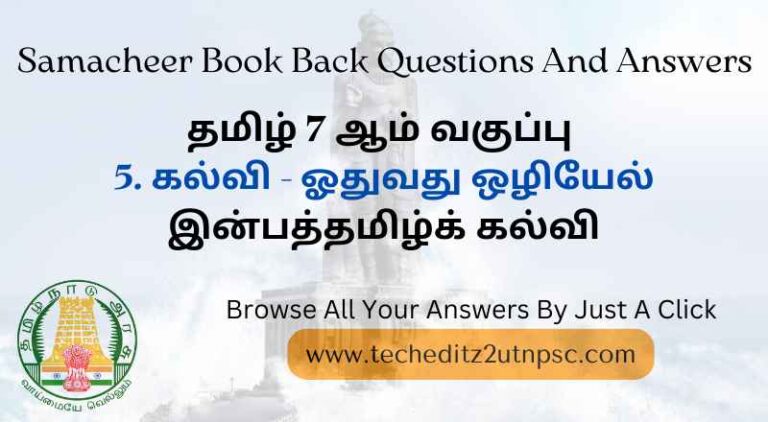support@techeditz2utnpsc.com | 8300-921-521
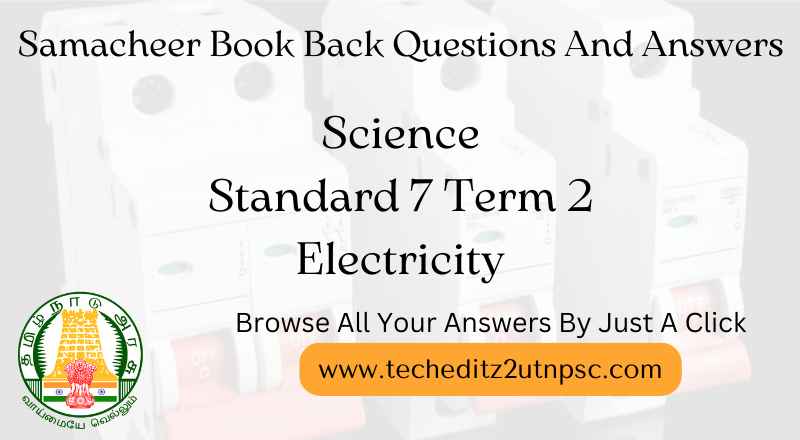
Electricity
Samacheer Book Back Questions And Answers For Science Standard 7 Term 2 “Electricity“
I. Choose the correct answer:
1. In the circuit diagram below, 10 units of electric charge move past point x every second What is the current in the circuit ________.
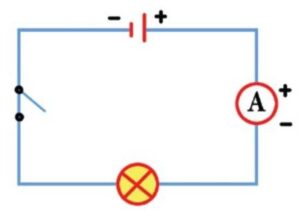
(a) 10 A
(b) 1 A
(c) 10 V
(d) 1 V
2. In the circuit shown, which switches (L, M or N) must be closed to light up the
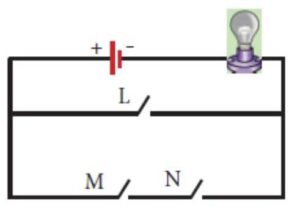
(a) Switch L only
(b) Switch M only
(c) Switch M and N only
(d) Either switch L or switches M and N
3. Small amounts of electrical current are measured in milliampere (mA). How many milliampere are there in 0.25 A?
(a) 2.5 mA
(b) 25 mA
(c) 250 mA
(d) 2500 mA
4. Which of the following circuits are the bulb connected in series?
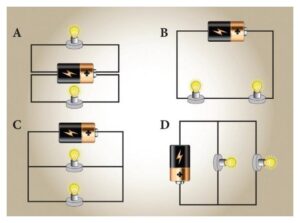
Answer: B
II. Fill in the blanks:
1. The direction of conventional current is _____ to electron flow.
2. One unit of coulomb is charge of approximately _____ protons or electrons.
3. _____ is used to measure the electric current.
4. In conducting materials electrons are _____.
5. S.I. unit of Electrical conductivity of a conductor is _____.
Answers:
1. Opposite
2. 6.242×1018
3. Ammeter
4. Loosely
5. Siemens/meters
III. True or false – If false give Hie correct answer:
1. Electron flow is in the same direction to conventional current flow.
2. The fuse wire does not melts whenever there is overload in the wiring.
3. In a parallel circuit, the electric components are divided into branches.
4. The representation of the electric current is A.
5. The electrical conductivity of the semiconductor is in between a conductor and an insulator.
Answers:
1. False (Electron flow is in the opposite direction to conventional current flow)
2. False (The fuse wire melts whenever there is overload in the wiring)
3. True
4. False (The representation of the electric current is I)
5. True
VI. Match the following:
1. Cell A. Used to open or close a circuit
2. Switch B. Safety device used in electric circuit
3. Circuit C. A complete path for the flow of an electric current
4. Miniature circuit Breaker D. Reset by hand, circuit becomes complete once again
5. Fuse E. A device which converts chemical energy into electrical energy
Answers:
1. E
2. A
3. C
4. D
5. B
V. Analogy:
1. Water: pipe:: Electric current: _____.
2. Copper: conductor:: Wood : _____.
3. Length: meter scale:: Current : _____.
4. Milli ampere: micro ampere:: 10– 3 A: _____.
Answers:
1. Wire
2. Insulator
3. Ammeter
4. 10-6 A
VI. Assertion and Reason:
1. Assertion (A): Copper is used to make electric wires.
Reason (R): Copper has very low electrical resistance.
A. Both A and R are true and R is the correct explanation of A.
B. Both A and R are true but R is NOT the correct explanation of A.
C. A is true but R is false.
D. A is false but R is true.
E. Both A and R are false.
2. Assertion (A): Insulators do not allow the flow of current through themselves.
Reason (R): They have no free charge carriers.
A. If both A and R are true and the R is correct explanation of A.
B. If both A and R are true but R is not a correct explanation of A.
C. If A is true and R is false.
D. If both A and R are false.
Visit Our YouTube Channel For More Free Videos: Click Here


